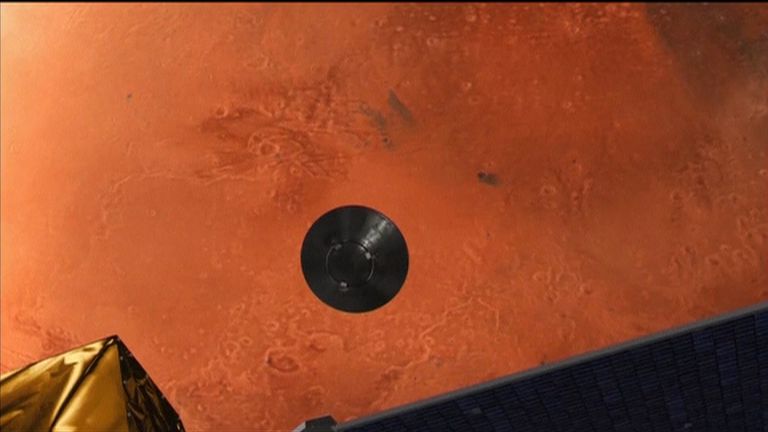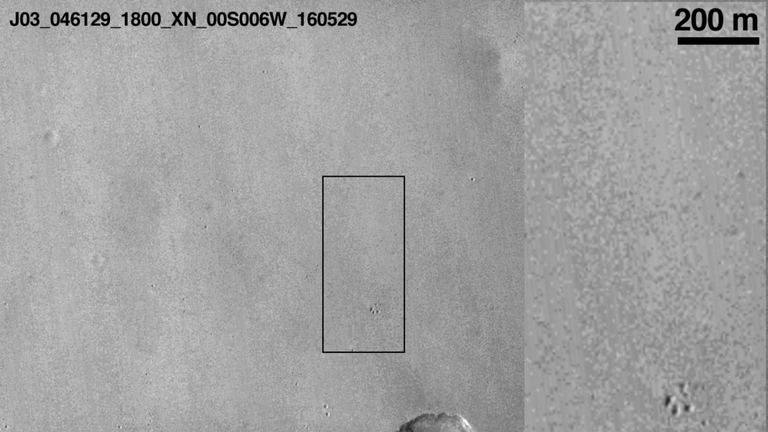Schiaparelli Mars probe smashed into planet after ditching parachute
The error came from a momentary glitch in the device that measured how fast the spacecraft was spinning, the ESA report revealed.
Thursday 24 November 2016 09:39, UK
The crash landing on Mars of the Schiaparelli probe last month was caused by a computer glitch.
The tiny lander, on a test-run for a future rover that would see if there was evidence of life on the Red Planet, flew into Mars at a breakneck speed of 335mph (540kph) instead of gently gliding to a stop.
Now scientists at the European Space Agency have said a sensor failure meant the probe threw off its parachute and turned off braking thrusters more than two miles above the surface of Mars on 19 October, as if it had already landed.
The error came from a momentary glitch in the device that measured how fast the spacecraft was spinning, the ESA report revealed.
In a statement, the ESA said: "The erroneous information generated an estimated altitude that was negative - that is, below ground level.
"This in turn successively triggered a premature release of the parachute and the backshell (heat shield), a brief firing of the braking thrusters and finally activation of the on-ground systems as if Schiaparelli had already landed.
"In reality, the vehicle was still at an altitude of around 3.7km."
Before that, much of the mission had gone to plan, the ESA said.
The €230m (£195m) probe had travelled more than 308 million miles (496 million km) for seven years on board the "Trace Gas Orbiter" before it set off on its own to reach the surface.
After its scorching, supersonic dash through Mars's thin atmosphere, it was supposed to glide gently towards the planet's surface.
In order to land safely, it had to slow down from a speed of 13,000mph (21,000 kph) to zero and survive temperatures of more than 1,500C.
The crash was Europe's second failed attempt to reach the alien surface, the first having occurred in 2003 when the British-built Beagle 2 robot lab vanished without trace after separating from mothership Mars Express.
The ESA team remain optimistic, saying any problems found by Schiaparelli were part of the trial-run and would help in the design of the future rover.






